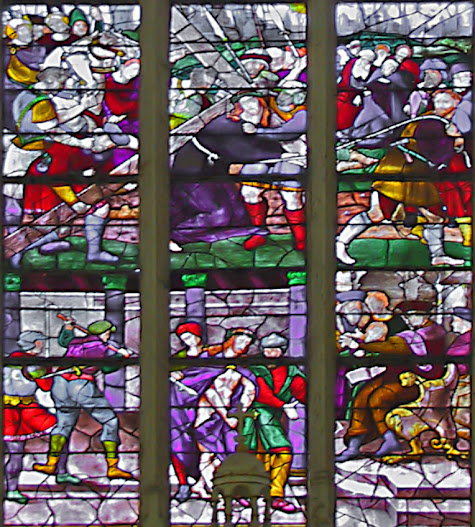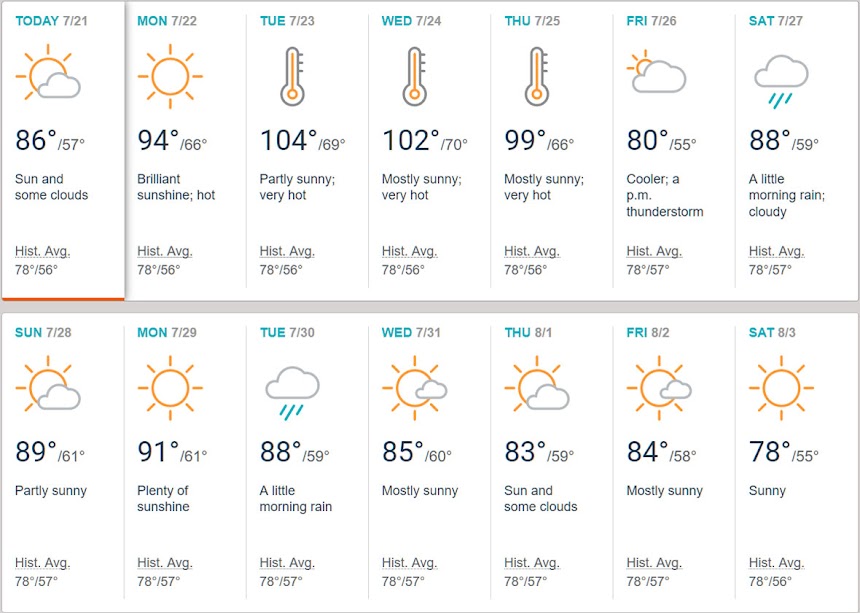That means, I hope and think, "the summer of our great upheaval." We knew that having work done in the house, especially building a new room in the loft, involving major plumbing work both upstairs and downstairs, would create some disorder. Now I'm starting to wonder how long it's going to take us to get it all straightened out. Not much will get done this week — I don't know how I'll feel after today's medical procedure. Anyway, it's going to be too hot inside and outside for physical labor. The weather on Télématin says we should expect highs between 41 and 43 ºC on Tuesday, Wednesday, and Thursday. Cooler on Friday, they promise.

Here's a recent photo of the loft space, taken from the "bedroom end" of the room where the new half-bathroom has been built out and plumbed in, toward the "family room" end. It's a pretty typical room in houses around here. People have their attic spaces finished off to increase the surface habitable of their houses, leaving the roof trusses exposed.. The only thing unusual about it is that we didn't divide it into several smaller rooms. We like the openness. Now we've had to move some chests of drawers around. There are three of them and now all of them have been moved to new places around the room. All are, of course, packed full, especially the drawers with my clothes in them (Walt is more organized than I am). We've started taking everything out and redistributing things.

This is my upstairs computer area. It hasn't changed much; it's always pretty much of a jumble. I don't spend a lot of time working on either of these computers. The big one is a file server where I have thousands and thousands of photos and documents stored. I can access them over the network using my laptop down in the living room. That cardboard box on the green rug is full of two or three drawers-full of just my T-shirts — the ones I haven't worn in years. They need a new home, and it might well be down in the garage. A lot of them will go to Emmaüs, a kind of French Good Will charity store, after I've gone through them all and decided which ones I might actually be able or want to wear again. Like most people, I think, we just have too much "stuff."

Here's the other end of the loft space, where we had the new room and plumbing put in. The chest of drawers against the wall is one we bought when we lived in Washington DC back in 1983. The Eiffel tower lamp and the mirror on the wall are things that came from North Carolina as gifts from my mother back in the 1980's and '90s. The dresser under the window is one we bought here when we arrived more than 15 years ago. The rug is one we bought in San Francisco in 1995, when we moved into a new house and needed to put a rug under the dining room table. A few years ago we hauled it out into the back yard and washed it down with the garden hose. It still looks pretty good.

And here again is the new throne room. We still need to varnish or otherwise finish the oak shelf over the sink and toilet. We had the building contractor put up a stray shower tile as a backsplash over the sink. And we bought wooden toilet seats at Bricomarché over in Noyers-sur-Cher for both WCs in the house They're nicer than the flimsy plastic ones that came with the two new toilets. The brown rug here is synthetic fuzz over a synthetic rubber backing. It will protect the knotty pine floor from splashes of water, and it's soft and pleasant to walk on barefoot. The fuzz dries quickly. On the left is a piece of furniture that my mother called a
shadowbox and that we'll mount on the WC wall. My father, who was a carpenter and cabinet-maker, built the shadowbox back in the early 1950s. It can be used for displaying knickknacks or memorabilia, or for storing useful items. My father also built a couple of end tables back then, and we have and use them here — one in the living room and one in the loft. These things are almost as old as I am. My father died in 1990; my mother in 2018.




















































